Why do cucumber leaves turn white and what to do?
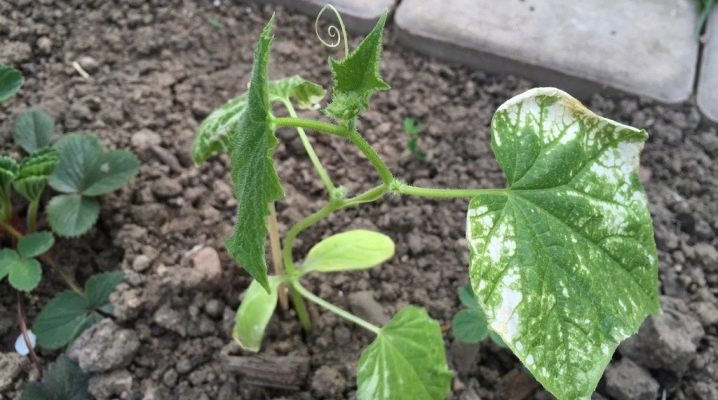
Cucumbers are one of the most popular crops among our compatriots; you can find it on almost every garden plot. It happens that the leaves of cucumber bushes begin to brighten, spots appear on them. This means that the plant is sick, and if you do not take action, you can lose the entire crop.
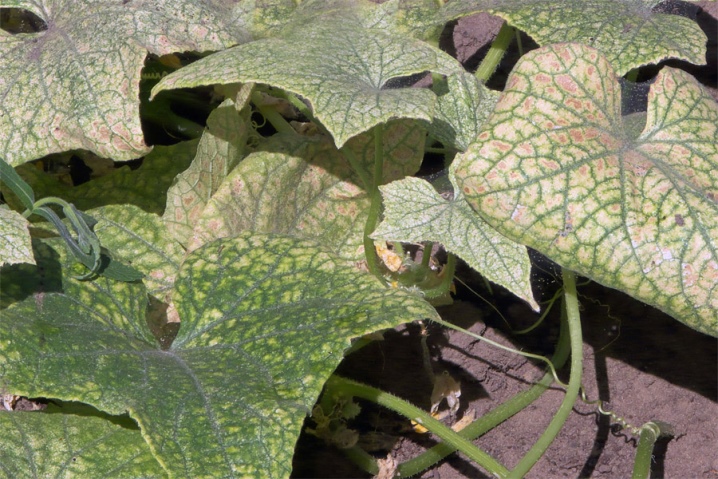
Wrong agricultural technique
The most common reason for changing the shade of cucumber leaves is care errors. Bushes may lack beneficial trace minerals, heat, light, or moisture. Less often, the reason is the weak acidity of the soil or the wrong time for planting young seedlings in open ground. Let us dwell on each of these reasons in more detail.
Lack of light
After planting cucumber seedlings, whitish spots appear with a lack of light. Most often this happens in greenhouses or in open areas when a shady place was allocated for a cucumber bed. First of all, the lower leaves turn white, if the rest do not deteriorate at the same time, you can not worry. It is enough just to provide the landing zone with additional lighting.
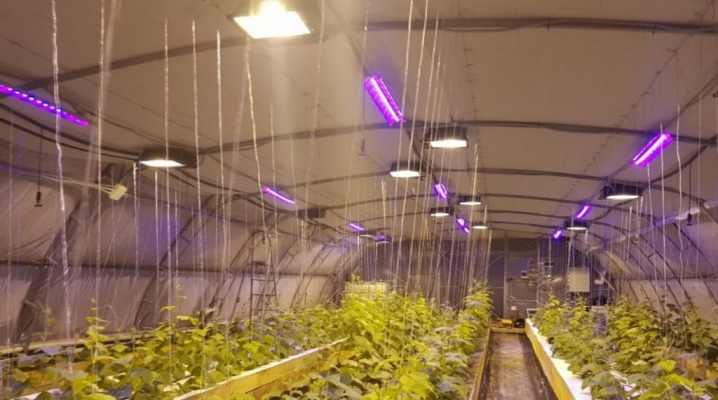
Lack of nutritional components
Leaves can brighten if the plant lacks useful minerals. If the lower leaves turn white and begin to dry, it means that the plant does not receive enough potassium and magnesium, it is necessary to make nutritious dressings with these minerals. When, in addition to these symptoms, dark streaks appear on the leaves, the bush needs iron and magnesium.
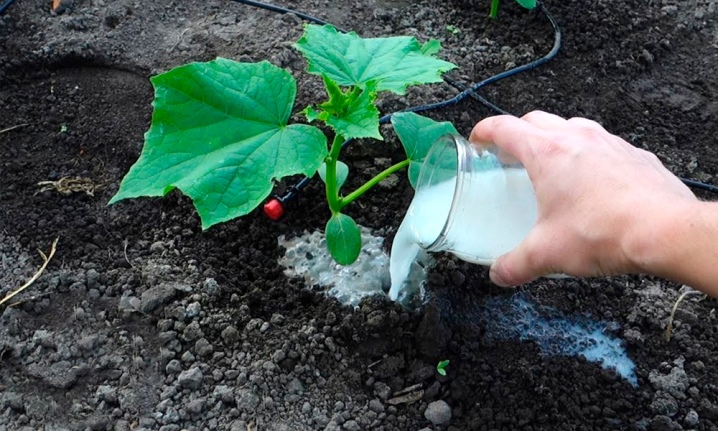
With a copper deficiency, the lightening of the color is accompanied by the drying of the edges of the leaves and tops of the plant.
Watering
Irrigation is an integral part of caring for any garden crop, and cucumbers are no exception. Excessive waterlogging or, on the contrary, lack of moisture becomes one of the common reasons for the appearance of light spots on the leaves. Most often, cucumber bushes cultivated in open areas suffer from a lack of moisture.
In some areas of our country, there are prolonged rains in the summer. High humidity has the same negative impact on the plant as lack of water. Waterlogging of the root system causes it to rot, as a result, the bush lacks nutrients, brightens and dries out. To cope with this problem, it is necessary to control the level of irrigation, taking into account weather factors - sometimes increasing and sometimes decreasing the volume of water.
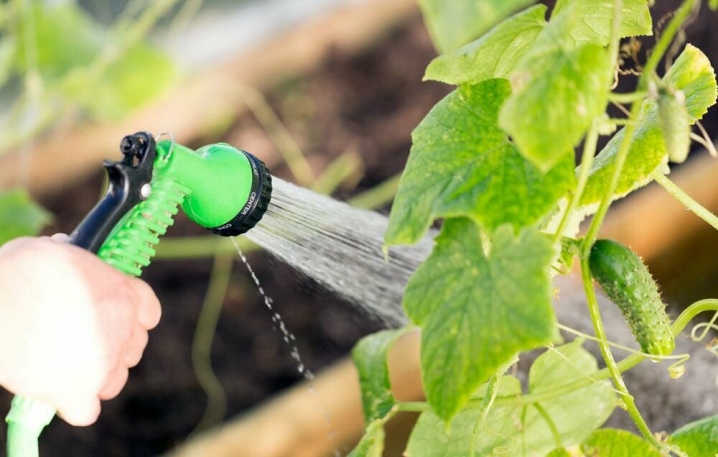
Soil acidity
Cucumber leaves begin to turn white in case of soil acidification. In soil where the pH exceeds 6-7 units, cucumber seedlings may stop developing altogether.... Therefore, before planting, it is necessary to set the parameters of the acidity of the substrate using litmus paper.
If there is no indicator at hand, you can try to determine the pH using folk methods. For this, a little soil is placed in a container and poured with water until a slurry consistency is obtained. Then add some salt and observe the reaction.
If the active formation of bubbles begins, it means that the soil is too acidic.
Ash can be used to reduce acidity. To do this, it is necessary to make a solution at the rate of 5 liters of water per 300 g of ash. The composition is thoroughly mixed and the future garden is watered. Alternatively, you can add a little dolomite flour or lime.
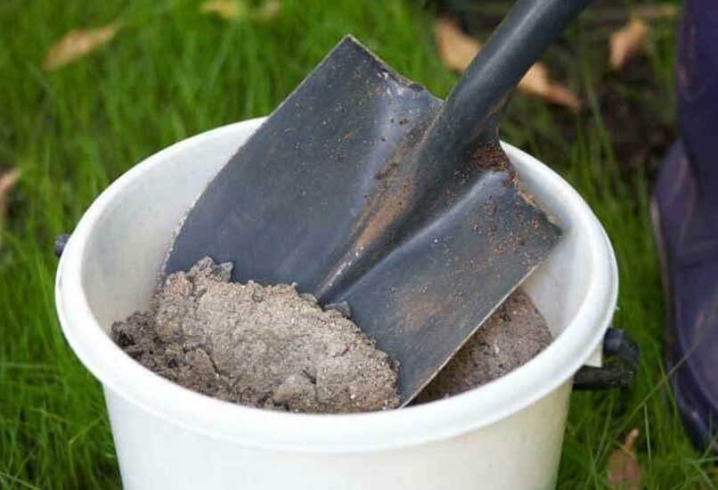
Treatment of diseases
Various diseases are very dangerous for the cucumber culture: fungal, viral and bacterial. They cause discoloration of the leaf plate. If untreated, they lead to the early wilting of the entire bush and a decrease in fruiting.
White mosaic
It is a viral infection that attacks weakened and diseased plants. The pathogen makes its way into the tissues and gets to the roots in a matter of days. Such a disease is very dangerous: it greatly reduces the yield of cucumbers, and if untreated, it leads to the death of the plant. The development of the virus is facilitated by an increased temperature (over 25 degrees), as well as its sharp jumps during the day and night.
At the first stage, the lashes stop growing. Whitish spots with a light yellowish tint appear on young leaves. In the course of the development of the disease, they combine into a single large spot, the fruits lose their color and curl.
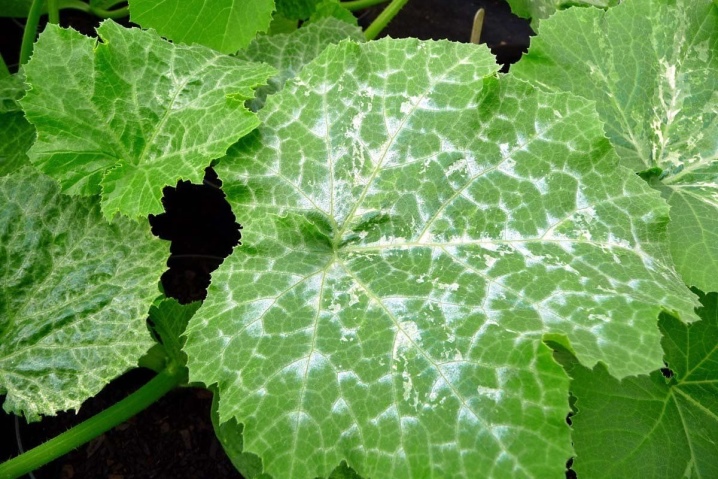
It is extremely difficult to cure pathology, it is much easier to prevent it. For this you need:
- periodically clean the area from any weeds;
- destroy plant residues after fruiting;
- avoid thickening of plantings;
- avoid sudden temperature fluctuations;
- do not irrigate the garden with cold water;
- any affected plants should be uprooted and burned as soon as possible.
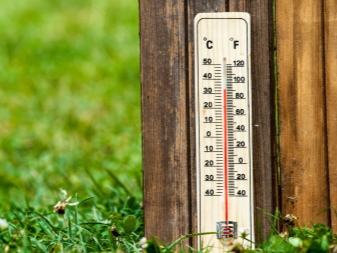
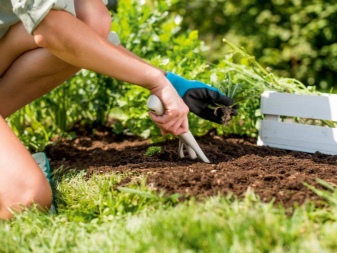
Ants are the carrier of the virus, so you should actively fight them.
Powdery mildew
Fungal infection, which sooner or later is encountered by almost all vegetable crops. Pathology manifests itself in the form of a light plaque on the leaves; if untreated, it passes to the trunk. The disease leads to leaf deformation and drying out. As a result, the entire culture quickly dies. The danger of a fungus is its rapid spread. In the absence of prompt response measures, the disease can destroy the entire cucumber patch. The pathogen is especially active at high humidity, most often it attacks the culture in June, when the air temperature is kept in the range from 18 to 25 degrees.
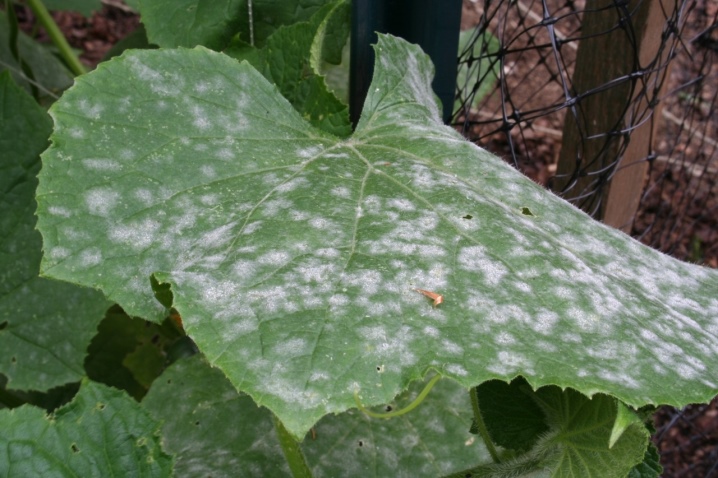
In addition, powdery mildew often occurs when nitrogenous fertilizers are too applied.
Sodium silicate is used to kill powdery mildew. Lactic acid bacteria give a good result - they are aggressive to the fungus, but at the same time they are sensitive to the vegetable culture. It is best to use yogurt or kefir, it is advisable to take those that have expired.
Organic treatment also helps in the fight against powdery mildew. Experienced summer residents pour manure with cold water, leave it for 3 days, then filter it and dilute the resulting solution with water in a ratio of 1 to 10. This mixture is used for foliar spraying. Alternatively, you can use an herbal infusion, such as nettle.

In stores you can buy ready-made preparations against fungus: Tiovit, Jet, Topaz, as well as CE or Hom... The culture in the open field is sprayed with a 20% solution of colloidal sulfur, in greenhouses the concentration of the drug is doubled. At the fruiting stage, periodic processing with a soap and soda solution will help.

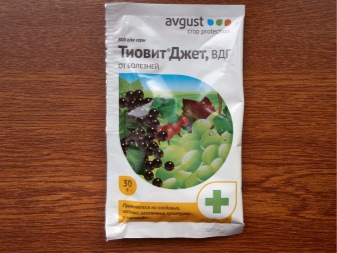
Ascochitosis
One of the most serious diseases. It harms not only mature bushes, but also seedlings. In addition to cucumbers, the disease can affect melon, pumpkin and watermelon.
The harm from ascochitis does not depend on the location of the garden bed and external weather factors. The survival of plants is influenced exclusively by their immunity - weakened plants quickly wither. Therefore, it is always easier to use preventive measures than trying to get rid of this infection.
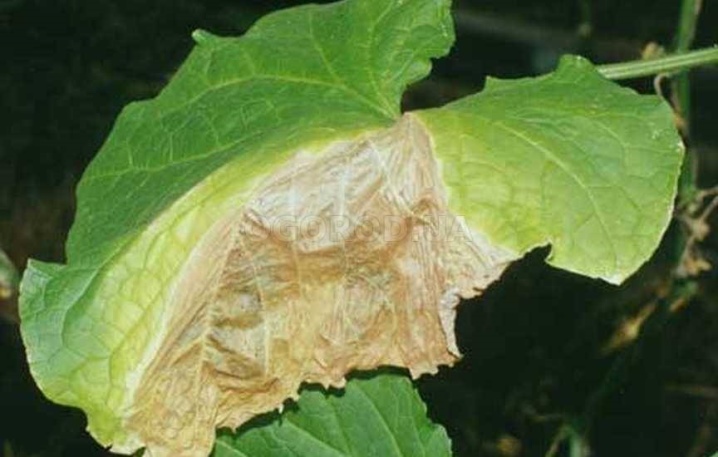
Anthracnose
This is one of the most common diseases, it manifests itself in the lightening of the leaf plates. This disease affects plants grown both in open ground and in greenhouses. Fungal spores can develop in any temperature conditions from +2 to +35. The infection affects all terrestrial parts of the plant, the incubation period is 5-8 days, depending on external conditions.
If the leaves are covered with whitish spots with a yellowish tint - you need to immediately process the planting... If untreated, the affected areas merge into one large spot, and bristles appear on top. Soon, the damaged areas dry out and fall off.

With a large amount of infection, pathogens move to ripening fruits and form brown spots.
A 1% solution of Bordeaux liquid helps against this ailment. During the treatment, the aerial parts of the plant are sprayed and the substrate is shed. Alternatively, you can use copper oxychloride or colloidal sulfur. They give a good effect preparation "Humus", compositions "Strobi" and "Quadris".
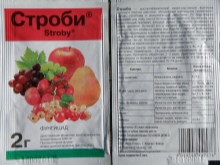
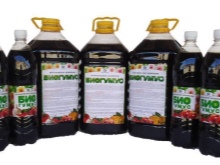
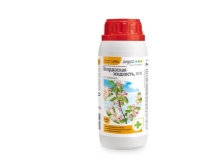
Pest control
If the plant is properly cared for, but the leaves still brighten, it is possible that this is due to the activity of insect pests.
Spider mite
This mite is harmless to humans, but it can cause significant damage to cucumbers.... The microscopic parasite feeds on vital plant juices, interferes with full-fledged photosynthesis and causes a deterioration in immunity. Such plants dry out and wither very quickly. Dry weather and excessively high air temperatures contribute to the development of infection.
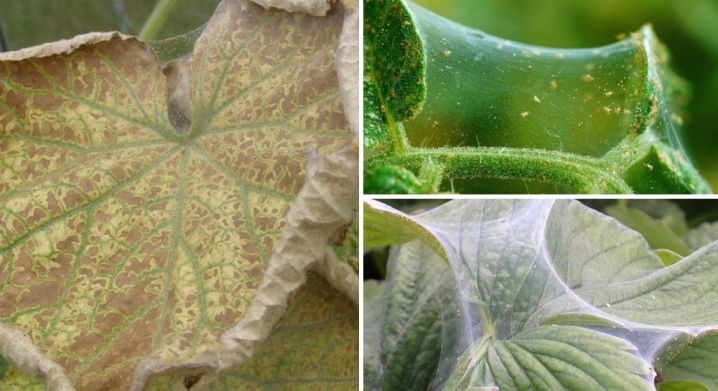
It is impossible to notice the tick itself, the parasite is so small. His presence is indicated by whitish traces on the leaf plates, reminiscent of a silvery cobweb. To prevent the risk of pest appearing, in the spring it is recommended to treat the soil with "Ditox", "Antiklesch", "Akarin", "Fitoverm".


To combat spider mites, it is necessary to remove the top layer of soil, and then use insectoacaricides. In previous years, insecticides were used in the fight against ticks. But as the experience of summer residents shows, in practice this method is ineffective. Insectoacaricides are preparations of intestinal action, the frequency of their use depends on the temperature background.
The higher the temperature, the shorter the intervals between treatments should be.
Among the chemicals, "Karbofos" and "Bitoxibacillin" are the best ones.... In the early stages of defeat, folk methods of struggle give a good effect, among them soap treatment is distinguished. Spraying damaged bushes is best done in the evening - then, before the warm time of the day, the funds will have time to earn. If processed in the morning, then with the onset of heat, the active substances will simply evaporate.
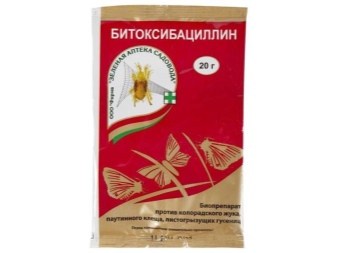
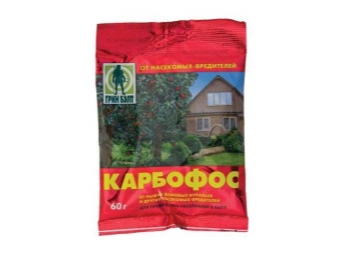
If possible, try to place it next to the affected area of the phytoseiulus tick... Alternatively, you can plant herbs that attract ladybugs. These are biological enemies of the tick, which very quickly destroy the entire styling.
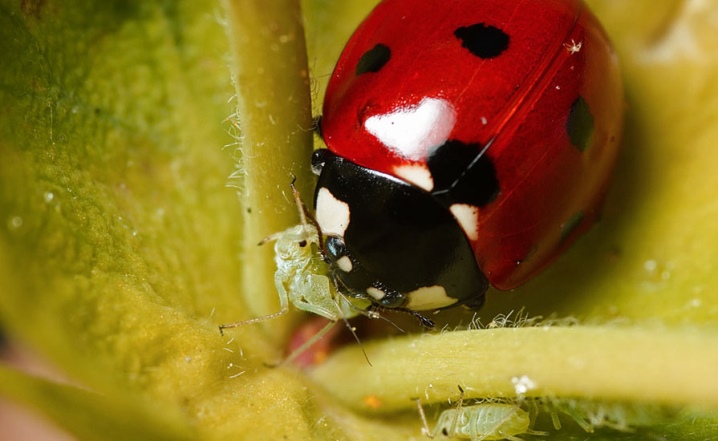
Greenhouse whitefly
Whitefly attacks exclusively greenhouse beds. In this case, yellow or whitish dots appear on the leaves. The danger of the pest is in the high reproduction rate, it can destroy the entire crop in a week.

The pest will have to be collected by hand, you can use sticky traps. The use of natural enemies of the insect gives a good effect. For example, the parasite encarsia - it is grown specifically to destroy the whitefly. As soon as he eats it, he immediately dies. Infusions and decoctions give a good effect, if the volume of infection is large, then it makes sense to turn to insecticidal preparations.
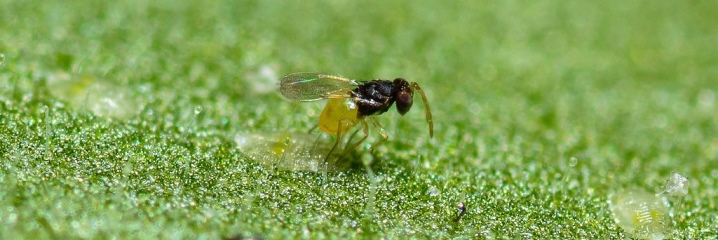
Prevention measures
Everyone knows that it is always easier to prevent a disease than to fight it. Regardless of the reason why the leaves began to brighten and wilt, it is important to resort to preventive measures. This will reduce the risk of illness.
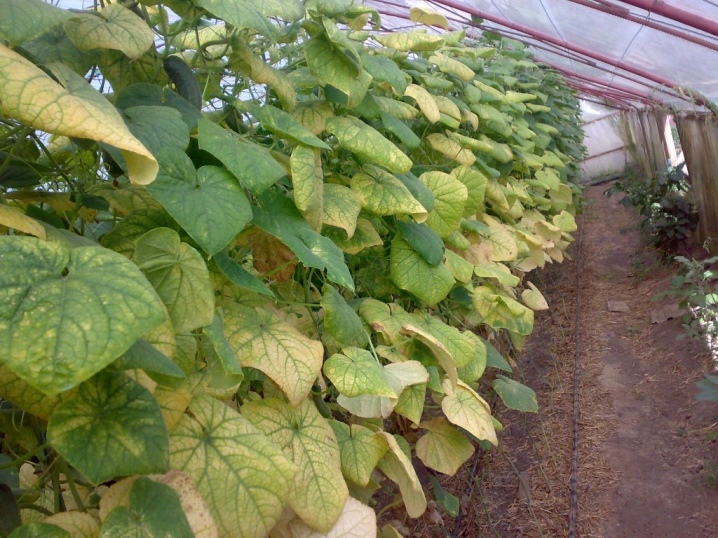
The rules are simple.
- After fruiting, it is necessary compost or burn all plant residues.
- Before planting a crop in open ground or on a greenhouse area, dig up the soil intended for the garden... Pathogens of fungi and larvae of pests often hibernate in the ground, once they are in the air, they die.
- Be sure to destroy all weeds - nothing superfluous should be left on the territory.
- Regularly inspect all parts of the cucumber bushes throughout the growing season... At the first sign of damage, immediately remove such areas and incinerate immediately.
- Observe the crop rotation - it is best to alternate the planting of cucumbers and tomatoes.
- Do not water the plant with cold water, especially in hot weather.... Fluctuations in temperature can significantly weaken bushes.
- Buy seed exclusively from trusted manufacturers.
- Treat the soil with a solution of potassium permanganate or formalin every year... The soil in the greenhouse should be steamed.
- In the early stages of development, spray young cucumber bushes with copper sulfate, taken in a ratio of 3 g per 5 l of water, or urea in a ratio of 5 g per 5 l of water.
- And of course, give preference to varieties that are resistant to disease.
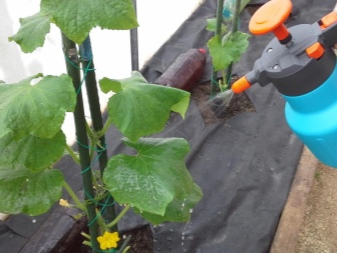
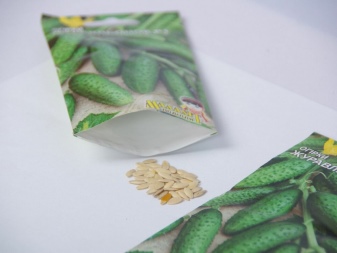
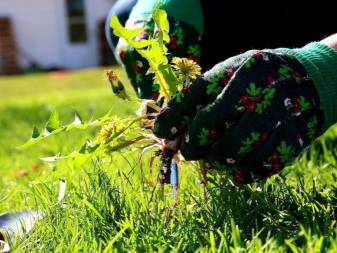
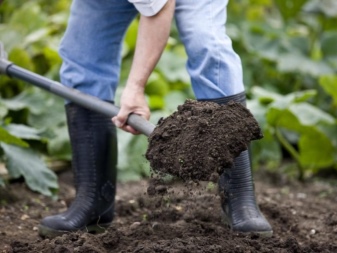












The comment was sent successfully.